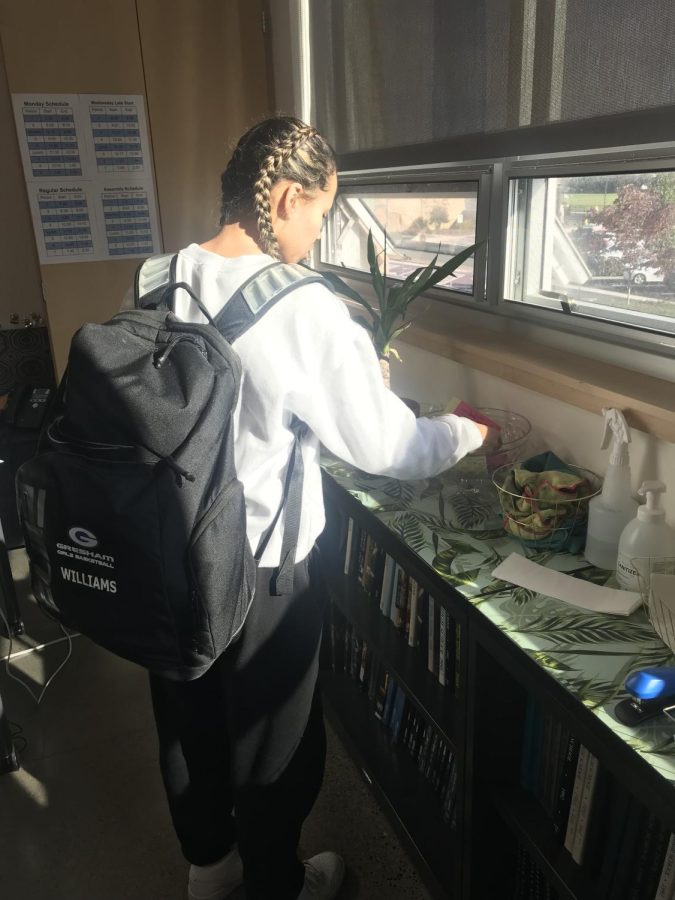2022-2023 School Year Begins With More Emphasis on Student Guidelines
Students have to fill out a “Tardy Slip” when they come in late.
November 4, 2022
Returning to school since the pandemic has proved challenging for students and staff, readjusting to normalcy and relearning etiquette for a school environment. Last year, many students were notorious for skipping, lingering in and vaping in the bathrooms, and using their phones excessively in class during instruction. This year, several guidelines are being implemented in and out of the classroom to try to prevent this.
“Last year was a tough year,” assistant principal Tori Maehara said. “We were all coming back to school after being out for much of the previous school year, and even the year before that. So there was a bit of re-acclimation to being in a school setting with a large number of students.”
The policies being enforced reflect the difficulties of last year, and staff seeks to aid student learning by limiting distractions through regulation. An example of this is the “Digital Citizen” signs displayed in every classroom, which show the status of cell phone use set by the teacher.
“In every class, you should have one of those cell phone signs. And in every class, you’re signing in if you’re tardy. And then every class, you have your hall pass and those kinds of things,” principal Erika Beddoe Whitlock said. “If you think about it, we identified that there are three things happening in the school that are impeding kids from learning. One of those is kids being tardy to class. One of those is kids not being in class when they’re supposed to, like being in the halls and being in the bathroom, and vaping and doing things we’re not supposed to be doing during class. The third one was cell phones and electronic devices, and how those impact learning.”
With that being said, staff know that it’s “unrealistic” to have complete regulation over cell phones, and agree that there’s a time and place for technology in the classroom.
“When we started to look at those things, we thought, okay, how can we figure out a way to incorporate this, or make the policies feasible?” Whitlock said. “One of the things that we were talking about [was that] we all use our cell phones. I have mine on me right now, and I’m checking it during my normal workday. So how do we incorporate cell phones in the classroom and not make students feel like it’s this horrible thing they can’t have, but figure out that there are times when it’s appropriate to use it, and there are times when it’s not appropriate. Like when I’m in a meeting with my boss, I’m not on my cell phone, right? We don’t tell kids ‘No, you can’t ever use your cell phones’ because that’s dumb. That’s not real. But it is real when we’re saying, hey, there are things that are more important that you need to have your phone put away, so it’s not distracting you, and then there are times when it’s appropriate to have it out.”
Staff wants to emphasize that these guidelines are being enforced to benefit students and their overall school environment by giving “structure” and “a level of comfort and safety.”
“I think moving towards having some norms in the building that help us know how we do things is really helpful,” English teacher Elizabeth Corum said. “I think it’s helpful for everybody because the purpose of coming here is so everybody can learn and feel safe and welcome. And I think the hope is to set some basics like attendance as a priority, getting to class as a priority, and treating our space well. This is a brand-new building, and I think we’re really lucky to have it. Hopefully, that helps us feel confident and successful as a school.”
